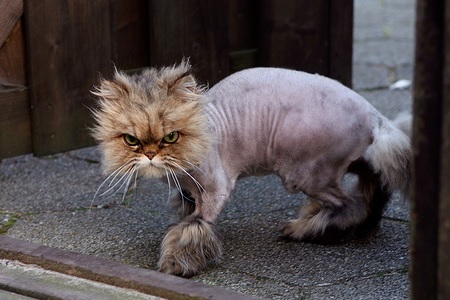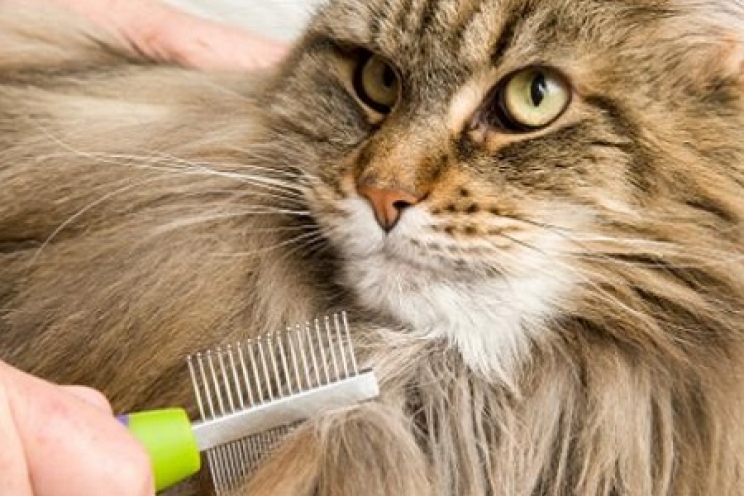Let's face it. Everyone is fascinated by a long-haired cat. Whether it's a Persian, rather than a "moderate" Norwegian Forest Cat or a Turkish Van, no one can question its beauty. Nevertheless, how much can it cost owners, in economic terms and effort, such a perfect and well-kept coat? Here are our recommendations.
It is a fact that cats with long or medium-long hair need more care than normal ones. For example, let's compare the fur of these felines with the one of a European cat. Surely the second will not need frequent brushing, much less washing, because it is perfectly capable of doing everything by itself.
For the Persian cat, on the other hand, as well as for the other long-haired cats, the situation is much more complex. The coat, in fact, is quite thick and in some cases also soft and woolly. This aspect, combined with the length of the hair, can inevitably represent an obstacle in the normal grooming operations all cats dedicate themselves during the day.

The owners of these cats will surely have witnessed the vain attempts of their friend to wash the hair on their back or on their belly. What happens in most cases is that the longer hair under the neck prevents it from reaching other parts of the body, so the animal will tend to wash only that area.
The consequence, in addition to the accumulation of dirt and impurities on the coat and on the skin, is mainly linked to the formation of knots, which in some cases can compromise the aesthetic aspect of the animals and in others they can represent a source of discomfort and pain in the cat. It is common, in fact, to hear owners who are forced to have their pets shorn; because the knots become so problematic they prevent the cat from even walking or eating, pulling the skin in several places.
Why does this happen? Surely not only for a predisposition due to the length of the hair. The most important factor is to ensure the animals grooming. Those who choose to buy or adopt one of these wonderful felines must be aware of the fact that they need constant care, especially during the moulting periods.
On the other hand, many owners tend to neglect this aspect, so they only brush the cat when it most convenient for them. In addition, another typical problem that you may have to deal with might be cats that refuse to go through with the grooming and cleaning process. As soon as you approach them with this strange tool (the brush), the cat runs away or scratches us violently. In these cases, the situation worsens further.
Here are some tips for the proper grooming of long-haired cats;
- Get them used to this routine from the first months of age: an adult cat who does not know the brush will hardly accept that you use it on him. For this reason, if you have just adopted a cat, start brushing it every day, enriching the grooming moments with many positive stimuli, such as snacks or cuddles;
- Choose suitable brushes: there are so many types of brushes and combs on the market. The most suitable for long-haired cats are above all the metal combs with mediumly narrow teeth. Another option could be the carders, very useful for the softer and more woolly hair;
- Buy sanitizing wipes: search the shelves of any pet shop and choose the most suitable wipes for your cat, from a wide selection. For example, those sanitizers, deodorants, degreasers and even those with natural pesticides are excellent. The important thing is that the cat likes them.
- Use a specific product for grooming: ask your dealer or groomer for advice. In fact, there are many products that can help untangle small knots, making brushing easier. You can use them just like a balm, after a bath, or on dry hair at any time;
- Buy a pair of scissors: if you have already located some pretty important knots and all the other methods you have tried have failed, you just have to cut them. Choose rounded scissors that cut well. Avoid handling the knots if they are too close to the skin, and just cut the most superficial ones;
- Place toys that stimulate the cat to scratch himself: you can use a simple brush you use to clean radiators, fix it at the bottom of an old chair, so the cat can pass underneath it and scratch himself with the bristles;
- To extreme evils, extreme remedies: if it is too late and your cat is already full of knots, you just have to take it to the groomer. In some cases, a minimum sedation by the veterinarian may be necessary, but be careful of the "professionals" who advise you to anesthetize the cat without a medical opinion.
Always remember that consistency and patience is the first solution to keep the cat's coat always nice and clean. So, make sure you brush it every day with the correct methods.










